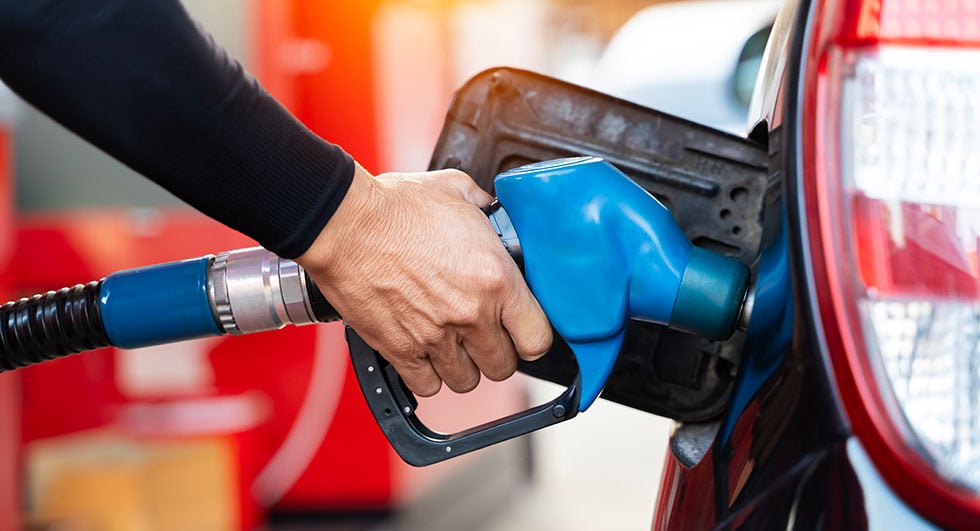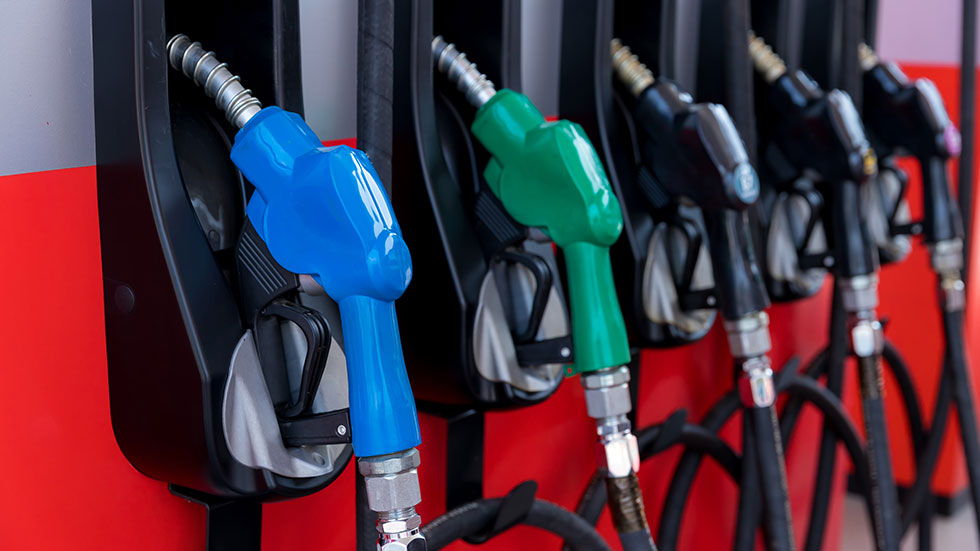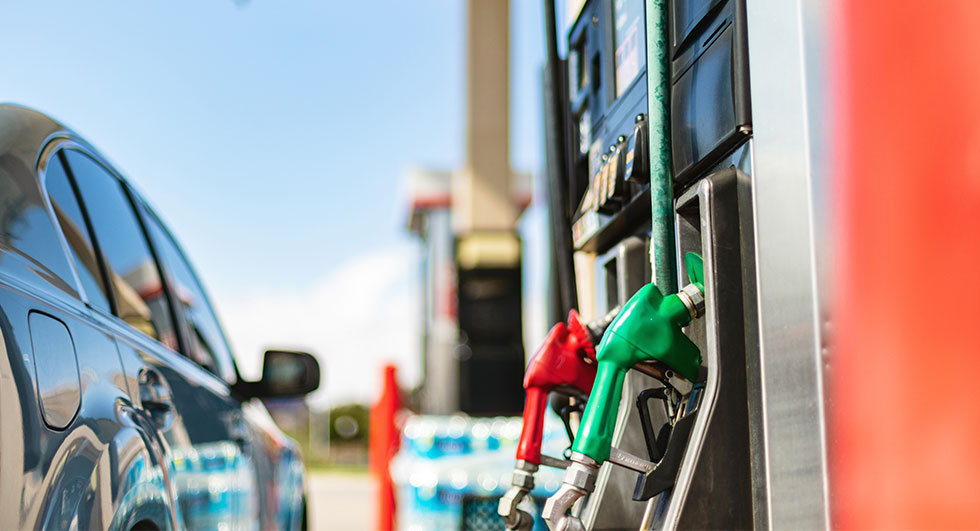Is It Bad to Top Off Your Gas Tank?
Overfilling your gas tank can damage your car, harm the environment, ding your wallet, and more


In today’s economy, the price of fuel at the gas pump seems to be on a roller coaster ride, up one week and leveling out or dropping the next. Retail gas prices have trended mostly downward from late 2022, with the US having some of the lowest conventional motor fuel prices in the entire world. In fact, the US is now the world’s largest producer of crude oil, averaging 12.9 million barrels per day in 2023. Russia’s ongoing war in Ukraine, however, continues to adversely impact the crude oil market through sanctions and supply chain disruptions, driving up fuel prices and leading to more market volatility and fluctuations in prices at the pump.
It can be difficult for consumers to make sense of these peaks and valleys in pricing, so our natural inclination is to want to reduce trips to the pump. While it may seem like a good idea to cram as much precious fuel into your gas tank as can possibly hold, is topping off gas bad for your car? In fact, is it dangerous to overfill your car’s gas tank? Here’s how topping off your gas tank can wreak havoc on your car, the environment and your finances, making it clear why drivers should avoid the practice of topping off your gas tank altogether.

Gas pump shut-offs exist for a reason
So, what is topping off gas? It’s when we fill our tank up to our vehicle’s recommended level—indicated by the gas pump automatically clicking off—and then squeeze some more gas into the tank, filling it to the brim. It may seem like gas pumps click off prematurely and that your vehicle can take another gallon or two. Or, maybe premium gas is extra cheap this week, so you really want to get that dollar amount displayed on the pump to a nice round number. The reality is that automatic shutoffs on gas pumps exist for many good reasons. The main reason is to protect you, the consumer, as well as the gas station and the environment from the hazards caused by spilled gasoline and escaped vapors.
Not only is gasoline a hazardous material due to its incredibly flammable nature, but gas evaporates quickly, producing harmful vapors that contribute to poor air quality.
When spilled on the ground as consumers try to squeeze that last little bit of gas into their tanks, it creates toxic sewage runoff.
Because of these safety and environmental concerns, gas stations are required per government regulations to equip their pumps with vapor recovery systems that prevent vapors from escaping and fuel from spilling on the ground. This means that any gas you pump after your pump clicks off can wind up being drawn back into the station’s storage tanks, meaning you’re paying for gas that’s not going into your vehicle. Yes, that’s right: You may end up paying for gas that’s not going into your tank but, instead, into the gas station’s tanks.

Topping off your tank is bad for your vehicle
Gasoline is highly flammable and evaporates quickly when exposed to heat. Because of this volatility, not only are spilled gasoline vapors bad for the environment, but highly flammable fumes can be incredibly dangerous. This is why, in addition to the vapor recovery systems equipped on gas pumps, there are several on-board systems inside every vehicle that designed to minimize and process the gas vapors present in your tank as well as those that are generated during the fueling process.
The Onboard Refueling Vapor Recovery (ORVR) and Evaporative Emission Control (EVAP) systems are required on each new vehicle sold in the US. While each system consists of a charcoal-lined canister that collects fuel vapor and absorbs it with activated carbon, the ORVR is responsible for capturing vapor as the gas pumps into your vehicle, effectively reducing hydrocarbon emissions during refueling by about 95 percent. The EVAP, on the other hand, manages gas vapors inside the fuel tank. All cars sold since the late 1990s are equipped with both of these closed-circuit systems that help prevent polluting vapors from escaping and trap and burn fumes as useable fuel.
The damage caused by habitually overfilling your gas tank
By topping off your gas tank even once, you begin to run the risk having liquid fuel slosh and flow into the delicate charcoal filters in these vapor recovery systems. Once they become saturated in liquid fuel, their capacity to capture and burn vapors successfully can be reduced or ruined completely. Not only do saturated filters in the EVAP and ORVR systems make your vehicle emit more hazardous emissions, but they can impact engine performance and reduce fuel economy. Eventually, these saturated filters may even lead to a “check engine” light or costly repair that was completely avoidable.
While it may be tempting and we may feel like we’re rewarding ourselves with fewer visits to the gas station, there are far better ways to save on gas and become a safer driver in the process. No matter which way you slice it, topping off your gas tank is a bad idea for all the following reasons.
- Spilled gasoline and escaped vapors are environmentally harmful.
- Overfilling your gas tank saturates your vehicle’s vapor recovery system, possibly leading to permanent vehicle damage and preventable repairs.
- Gas stations are equipped with vapor recovery systems that recover gas pumped after the automatic shutoff. So, remember, topping off means you’re paying for gas that’s going back into the station’s tanks.
What to do if you accidentally overfill your gas tank
While habitually overfilling your gas tank isn’t wise, doing it accidentally once or even occasionally shouldn’t cause any noticeable damage to your vehicle. In the event you overfill your tank, the most important thing is to try to clean any spilled gas off yourself and the side of your vehicle. Gas is an irritant that can harm your skin and also damage the finish and color of your car’s paint over time.

Is it safe to drive after overfilling your gas tank?
While regularly overfilling your gas tank can lead to delicate vehicle components being soaked in fuel, there’s nothing inherently dangerous about driving with an overfilled tank. If you’ve accidentally overfilled, you won’t even notice a difference in how your vehicle drives other than getting just a few extra miles on the tank. Over time and after repeatedly topping off your tank, however, you may notice your vehicle experiences difficulty starting, lingering gas odors, and/or a reduction in fuel efficiency, just to name a few negative effects.
Is letting your gas tank get low bad, too?
While running out of gas is an inconvenience and a risk to your personal safety, making a habit of driving frequently with little to no fuel in your vehicle could be bad for the health of your fuel system. This is because over time, just like many other automotive components that use fuel or motor oil, your gas tank will hold various deposits, dirt, or rust. When fuel levels are low in your tank, those existing deposits and impurities have more of a chance to be sucked into your fuel filter and pump, clogging them. These clogs, in turn, can lead to reductions in fuel-burning efficiency or wear parts to the point of breaking.
While topping off your gas tank is never a good idea, keeping your gas tank at least halfway full is a good habit to adopt. Not only is it better for the environment, but it also increases your safety and the safety of your vehicle by ensuring that you don’t run out of gas on a busy road.
